GESTALT-ORIENTED PERCEPTUAL RESEARCH IN JAPAN: PAST AND PRESENT*
Kaoru Noguchi1, Akiyoshi Kitaoka2, Midori Takashima1
1College of Humanities and Sciences, Nihon University, Tokyo, Japan
2Department of Psychology, Ritsumeikan University, Kyoto, Japan
Noguchi, K., Kitaoka, A., and Takashima, M. (2008) Gestalt-oriented perceptual
research in Japan: Past and present. Gestalt Theory, 30, 11-28.
(Action editor: Dr. Walter H. Ehrenstein)
Web-pages for the figures
since December 4, 2007; published May 1, 2008
Large bitmaps
Please click and download them, Walter.
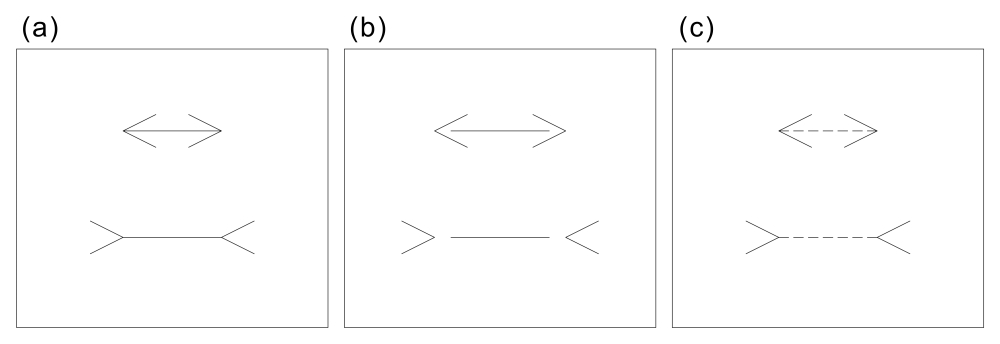
Figure 1. (a) Müller-Lyer illusion. A horizontal line appears to be shorter than it is when oblique lines are attached inward (upper image), while a horizontal line appears to be longer than it is when oblique lines are attached outward (lower image). In this panel, the horizontal line of the lower image appears to be longer than that of the upper one though they are the same in length. (b) When the oblique lines leave the end of the horizontal line, the illusion magnitude decreases for both images. (c) The illusion occurs strongly in the narrow parts of the horizontal line that are directly connected to the oblique lines. In the upper image, the fragments connected to the oblique lines appear to be shorter than the rest; in the lower image, those appear to be longer than the rest. Some fragments in the inward image are overestimated.
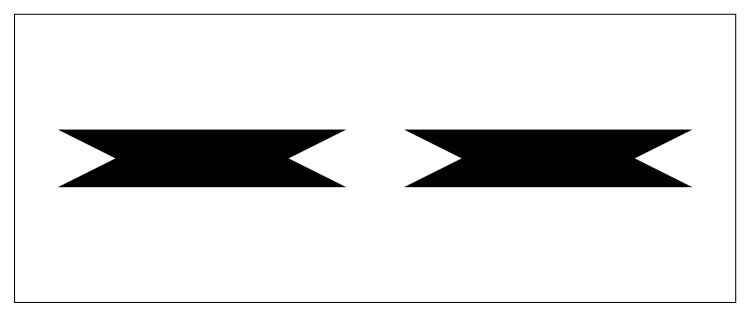
Figure 2. Morinaga's demonstration of the Müller-Lyer illusion, in which the outward black areas appear as figures, wheras the white interspace assumes ground character.
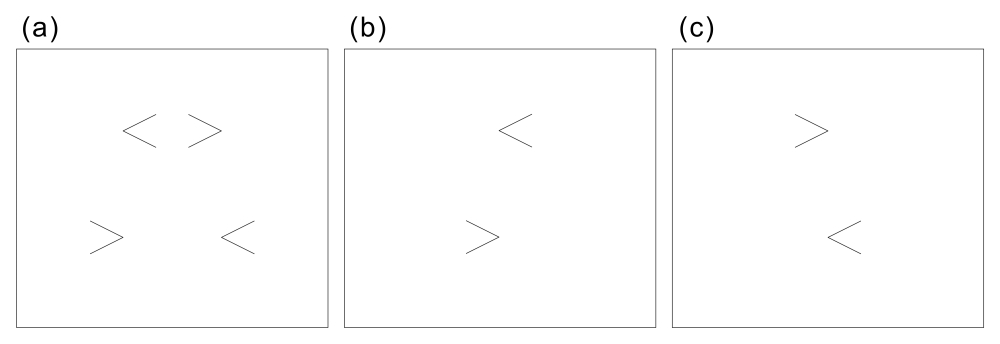
Figure 3. Morinaga's paradox, Type I (size illusion vs. position illusion). (a) The Müller-Lyer illusion remains even if the horizontal line is not real but subjective. On the other hand, the perceived alignment of the tips is reversed (Morinaga misalignment illusion) when the observer pays attention to either the left half (b) or the right half (c).
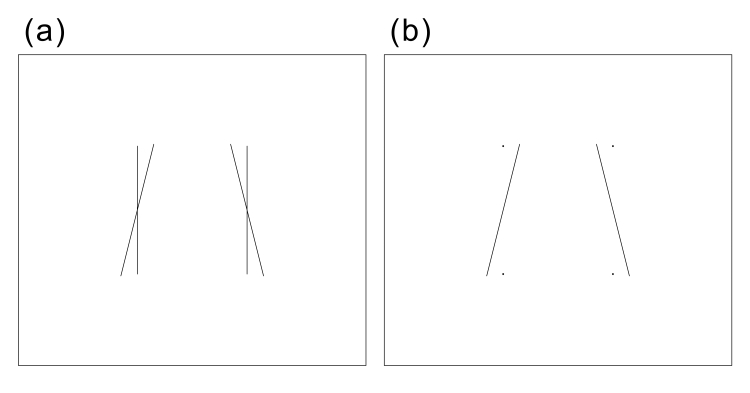
Figure 4. Morinaga's paradox, Type II (orientation illusion vs. size illusion). (a) The Zöllner illusion. The two vertical lines appear to tilt as if they are tapered downward. (b) On the other hand, the perceived distance between the line ends of each horizontal pair is reversed when dots are drawn at the ends of the vertical lines. The upper distance appears to be shorter than the lower (size illusion). As observed by one of the present authors (Kitaoka) the position illusion accords with the size illusion and is rather clear when the observer pays attention to either the left half or right half, in which the left alignment appears to tilt clockwise while the right counterclockwise.
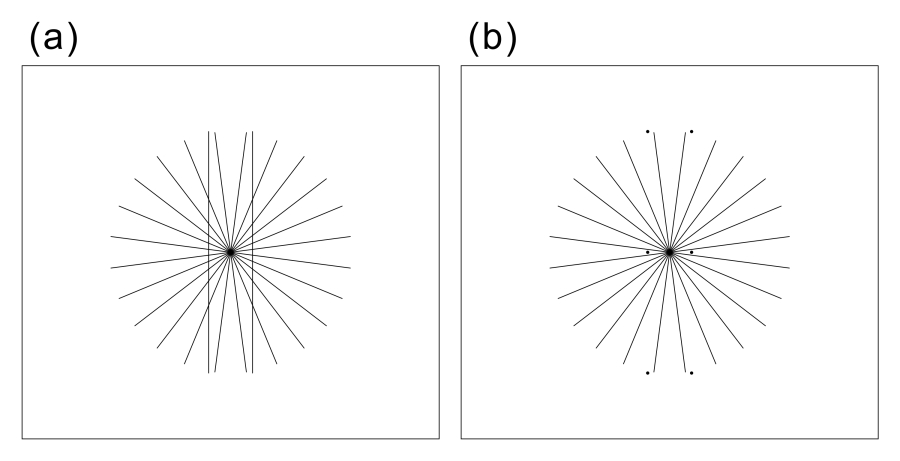
Figure 5. Morinaga's paradox, Type II. (a) The Hering illusion. The two vertical lines appear to bulge outward. (b) Conversely, the virtual line connecting the line ends and the middle point of each vertical line appears to curve inward.
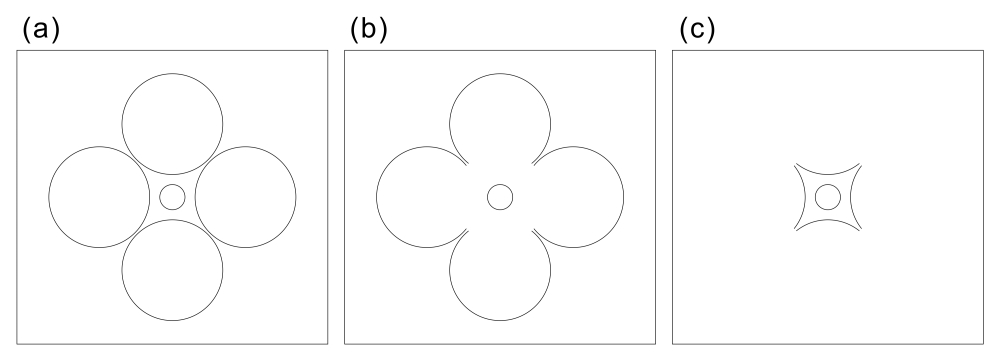
Figure 6. Morinaga's paradox, Type III (size contrast vs. size assimilation). (a) The underestimation effect of the Ebbinghaus illusion. The circle surrounded by larger circles appears to be smaller than it is. This effect is not given from the proximal parts of the larger circles as suggested by the vector-field theory. (b) When their proximal parts are removed, the underestimation effect of the Ebbinghaus illusion remains. (c) If their distal parts are removed, the inner circle appears to be larger than it is.
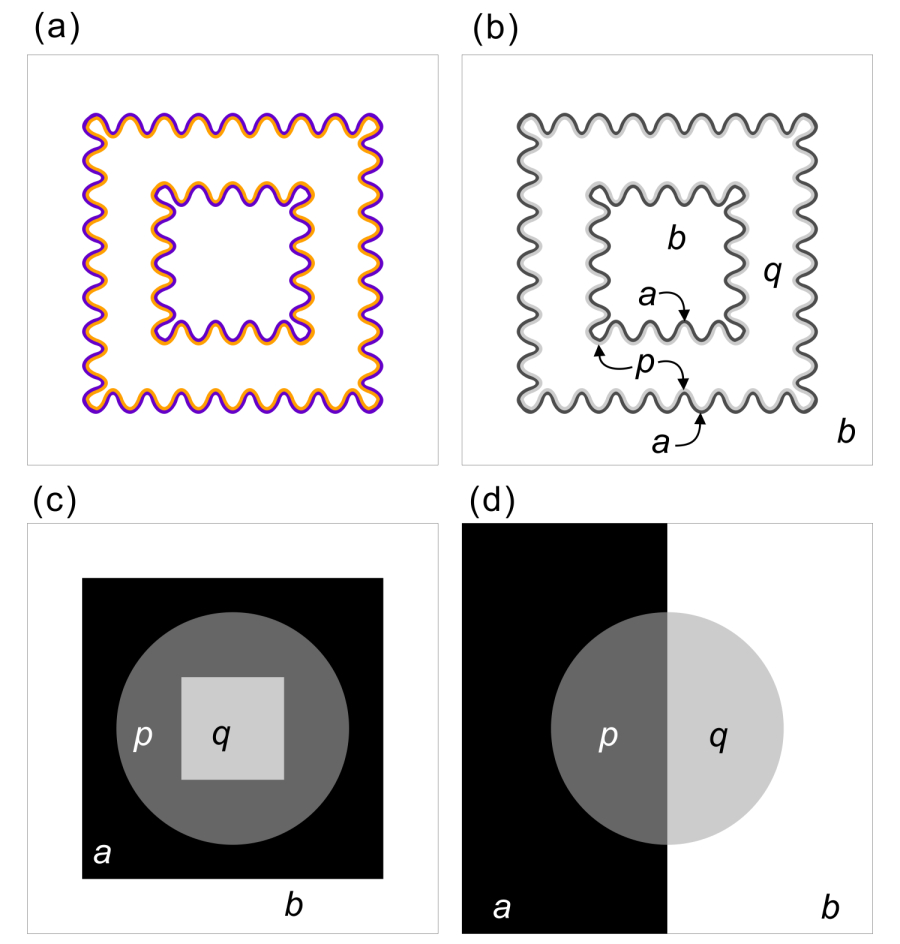
Figure 7. Watercolor illusion and apparent transparency. (a) The watercolor illusion. The corridor area appears to be tinted orange, to be veiled, and to be figure. (b) Achromatic watercolor illusion. The corridor area q appears to be veiled, to be darker than the surround b though they are the same in luminance, and to be figure. The alphabets a, b, p and q correspond to those shown in (c) or (d). (c) A possibly novel image of apparent transparency. It appears that a black square bearing a square window in the center is placed on the white background, and that a translucent disk appears to be in front of the black square and to cover the window entirely. The disk always appears to be transparent in front, i.e. unique transparency (Adelson and Anandan, 1990; Anderson, 1997). (d) Metelli's figure demonstrating unique transparency. The disk always appears to be transparent in front.

Japanese Gestaltist Professor Kaoru Noguchi's last book